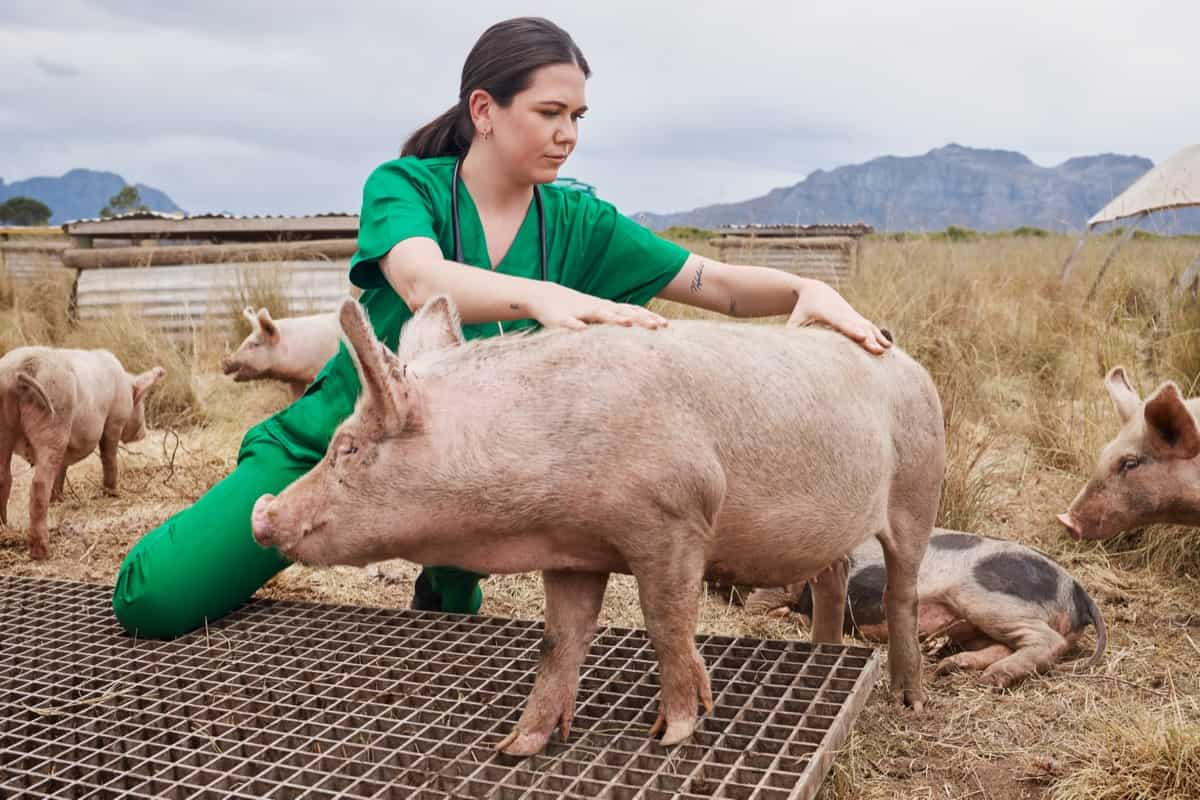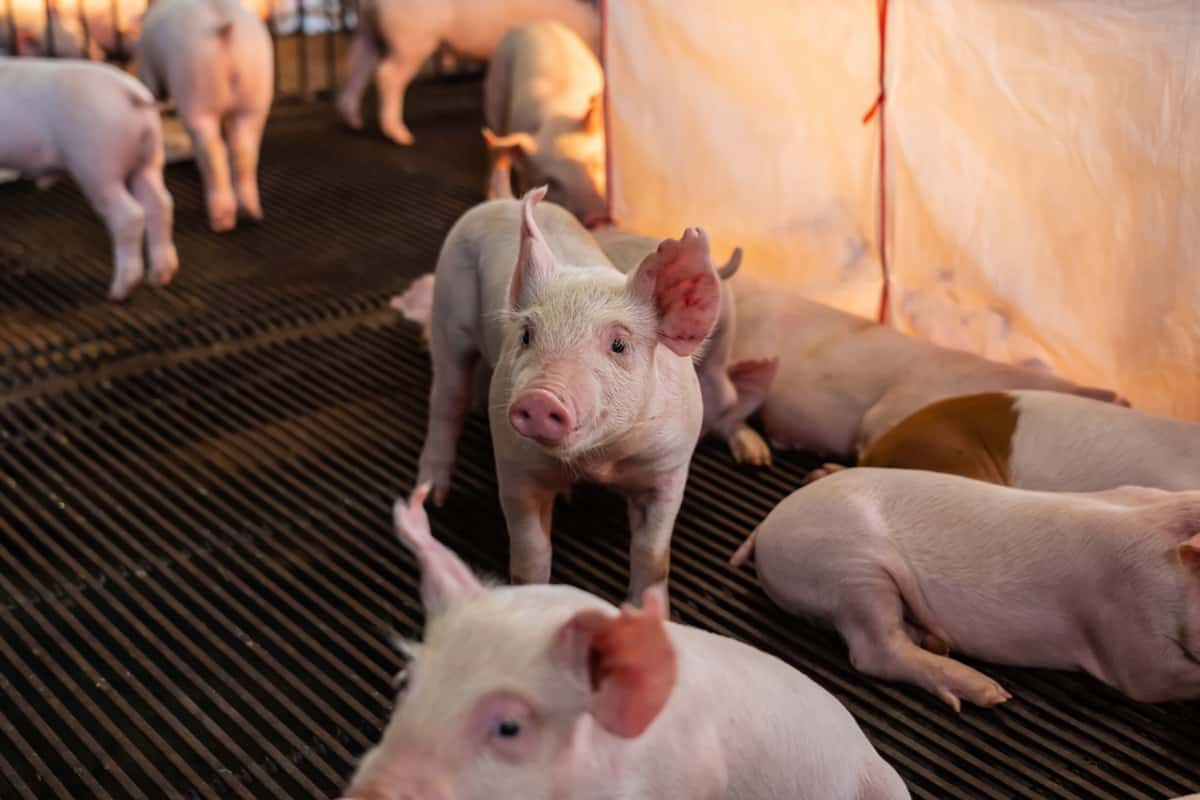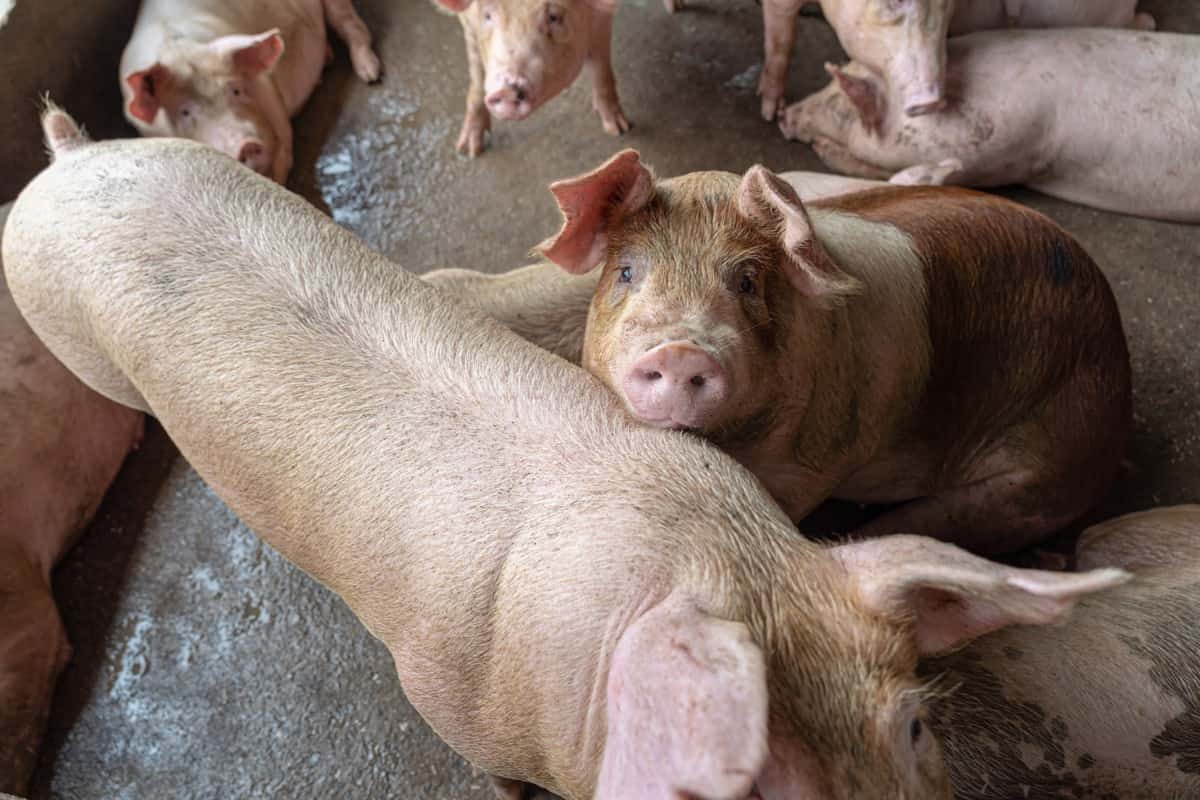FMD is a viral disease that affects pigs, sheep, and goats and poses a significant hazard to the global livestock industry. An Aphthovirus causes the disease with seven serotypes, each with different strains. The virus is spread by contacting infected animals or their waste, breathing in secretions from infected animals, or eating feed from infected animals. Animals with FMD have fever and blisters on their muzzles, teats, and paws.

Morbidity can reach 100%, and young animals may die in vulnerable populations. FMD is still common in much of Africa, the Middle East, and southern Asia. FMD outbreaks can disrupt livestock output and cost billions to contain, like the 2001 UK outbreak. Biosecurity steps like isolating and slaughtering infected and at-risk animals and vaccination are essential for eradication.
Antigen ELISA serotypes the virus, and real-time RT-PCR confirms infection. FMD management needs government, international organizations, and livestock industry cooperation. Preventive steps, outbreak detection and control, and stakeholder communication reduce the disease’s effect on animal health, welfare, and livelihoods.
Foot and Mouth Disease (FMD) Management in Pigs/Swine
Causes of Foot and Mouth Disease in Swine
Foot and Mouth Disease (FMD) in swine is caused by a highly contagious virus belonging to the Picornaviridae family. There are seven known serotypes of the virus, with serotype O being the most common cause of outbreaks in swine. The virus is transmitted directly or indirectly through contact with infected animals and mechanical vectors such as people, vehicles, and equipment. Pigs can shed the virus up to 3,000 times more than cattle, making them a potential transmission source. The virus can also be introduced to previously FMD-free areas by importing infected animal products.
The incubation period for Foot and Mouth Disease in Pig
Pigs typically incubate the FMD virus for two days. Animals have the virus in the pharynx and blood before the disease appears, so they can transmit it before symptoms appear.
Disease Cycle of Foot and Mouth Disease
The disease cycle of Foot and Mouth Disease (FMD) involves the introduction of the virus to a susceptible host population, followed by the replication of the virus in the host’s epithelial cells. The virus then spreads to other tissues and organs, causing fever, blisters, and erosions in the mouth, nose, and hooves. The infected animal sheds the virus in secretions and excretions, contaminating the environment and potentially infecting other animals.
What are the Symptoms of Foot and Mouth Disease?
- The disease is characterized by fever, anorexia, reluctance to move, and screaming when forced to move.
- The signs are followed by vesicles on the coronary band, heels, interdigital space, snout, mandible, tongue, and, in some cases, on the hocks and knees of pigs.
- Mouth lesions are uncommon and tend to be “dry” type, with no drooling. Sows may abort, and piglets may die without showing any clinical signs.
- Additional symptoms of FMD in pigs include mild lameness, blanching around the coronary band, and a fever of up to 41.5°C.
- Affected pigs become lethargic, huddle among other pigs, and have little interest in feed.
- Depending on the severity of the vesicles, the horn of the foot may completely slough off, leading to chronic lameness in recovered pigs.
- Young pigs (<14 weeks old) may die without clinical signs of illness due to virus-induced myocarditis.
Diagnosis of Foot and Mouth Disease in Pig
Diagnosis of Foot and Mouth Disease (FMD) in pigs involves laboratory confirmation, as clinical signs can be similar to other vesicular diseases. Samples of vesicular epithelium or fluid should be collected and transported in a specialized medium. Real-time RT-PCR assays are commonly used to detect FMD virus (FMDV) genomes, and antigen ELISAs can determine the serotype.
In case you missed it: Swine Influenza Management in Pigs/Swine: Disease Symptoms, Treatment, and Prevention

Serologic tests for antibodies to nonstructural proteins can indicate past or present FMD infection, regardless of vaccination status. However, these tests may be less sensitive in cases with limited virus replication. Laboratory diagnosis should be performed in specialized laboratories meeting OIE requirements for Containment Group 4 pathogens.
Treatment and Control of Foot and Mouth Disease
- Pigs suffer from FMD, a highly contagious viral disease. Infected animals have no treatment. FMD can be controlled with multiple techniques. Measures include:
- Animal and product travel restriction: Infected animals and products can easily infect healthy animals.
- Eliminating infected animals and diseased property must incinerate, bury, or render corpses.
- To avoid virus spread, vehicles transporting animals or animal products must be disinfected before leaving the infected area.
- FMD prevention: Vaccination. In FMD-free areas, all animals on infected premises are culled, and animal mobility is restricted to prevent virus spread. Production animals, especially high-yielding dairy calves, are vaccinated in endemic areas.
Preventive and Management Measures to Control Foot and Mouth Disease
- FMD prevention requires quarantine in pig farms. Restricting access, disinfecting footwear, clothing, and tools, and quarantining new pigs before adding them to the herd to avoid FMD.
- Controlling pig and pig product traffic prevents FMD. Disinfected vehicles should carry FMD-free pigs.
- Pig FMD is vaccinated. Vaccines protect both endemic and non-endemic.
- Disease tracking and reporting: Early detection of pig FMD prevents its spread. Farmers and veterinarians should report potential FMD cases.
- FMD prevention requires disposing of infected animal remains. To keep scavengers away, infected corpses should be burned or buried on-site.
- Disinfecting pig houses and machinery prevents FMD.
Impact of Foot and Mouth Disease
- Infected animals can spread FMD rapidly to susceptible animals. Livestock sectors can lose money due to lower productivity, trade restrictions, disease control, and eradication.
- Good veterinary services allow FMD detection and vaccination quickly. FMD-free states kill infected and high-risk animals. Public concern about mass culling has spurred vaccine research.
- Limited FMD shots. They create massive amounts of infectious viruses before inexpensive, high-containment facilities are inactivated. Vaccinated animals are shielded from clinical disease but not pharynx viral persistence. Infected animals are hard to distinguish without pure vaccines.
- They reduce disease spread and clinical signs and protect production animals, notably high-yielding dairy cattle. New vaccines are improving potency and reducing mass culling.
In case you missed it: Swine Erysipelas Disease Management in Pigs/Swine: Symptoms, Treatment, Prevention

Conclusion
Foot and Mouth Disease in pigs can result in substantial economic losses for the pig industry. Disease management requires prompt diagnosis and implementation of control measures, such as vaccination and culling. Controlling the movement of people and implementing biosecurity measures are crucial to preventing the spread of disease.
- Natural Solutions for Pest Control in Flower Gardens
- Types of Fungicides Used in Agriculture
- Common Issues in the Fruit Development Stage of Pomegranate Farming
- Fruit Development Issues in Papaya: Easy Solutions and Treatment
- Soil-Borne Diseases and How to Protect Your Plants
- Practices to Prevent Disease Spread in the Garden
- From Wilted to Thriving: How to Treat Root Rot Naturally in Houseplants
- Natural Remedies to Cure Brown Spots on Fig Tree Leaves
- Natural Solutions for Poinsettia Problems: 100% Effective Remedies